Dinuguan, also known as chocolate meat, is a savory dish made with diced pork, pork blood, and spices. This classic Filipino pork stew is hearty, boldly flavored, and delicious as a main meal with steamed rice or a midday snack with puto.
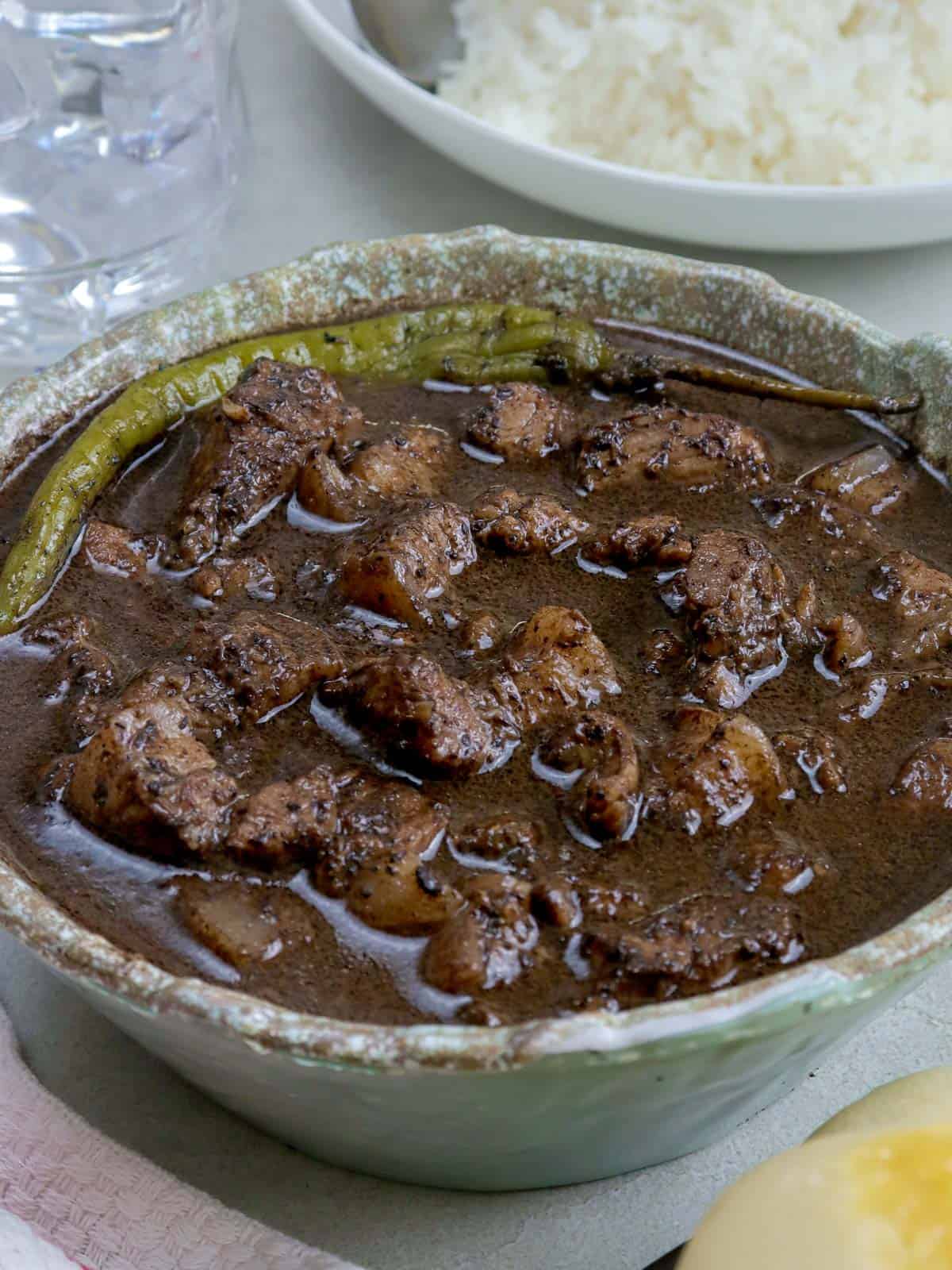
I usually make my dinuguan with pork and offal cuts, but since I piqued G's curiosity enough to try the dish, I used only pork belly in this recipe to pare down the fear factor.
He already has to wrestle with the idea of eating pork blood, and adding bits and pieces of ears and intestines into the mix might be too much for the poor guy to handle in one sitting.
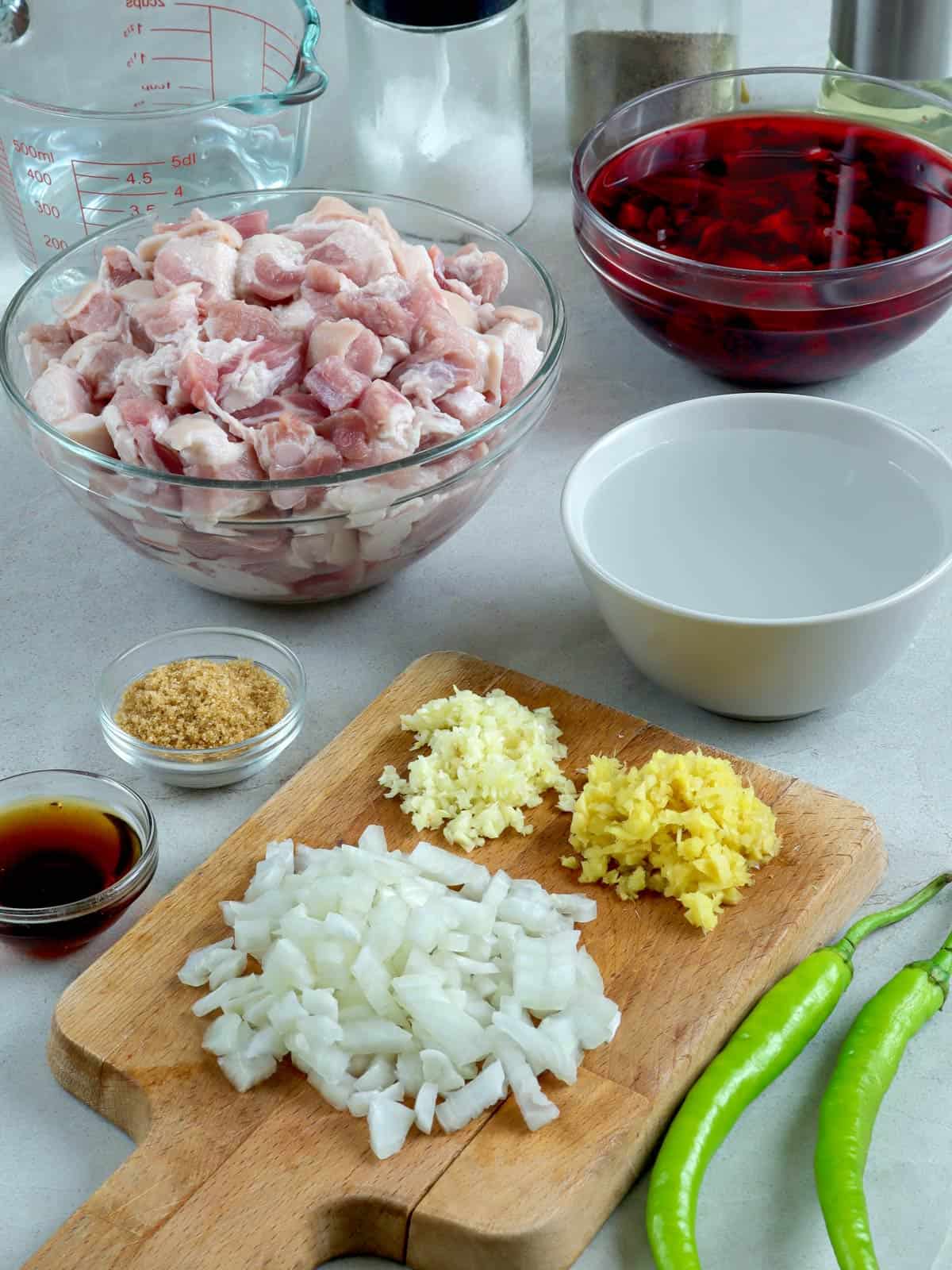
What is Dinuguan
Dinuguan , which comes from the root word dugo (meaning "blood"), is a savory Filipino stew made of bite-sized pork cooked in pig's blood, vinegar, and spices, including garlic, onions, and chili peppers.
Fondly referred to as "chocolate meat," the pork blood stew is also called tid tad in the Kapampangan region, sinugaok in Batangas, dinardaraan in the Ilocos area, dugo dugo in Cebuano, and tinumis in Bulacan and Nueva Ecija provinces.
It's commonly served as a main meal with steamed rice or as a midday snack with a side of puto rice cakes to dip and soak up the savory gravy.
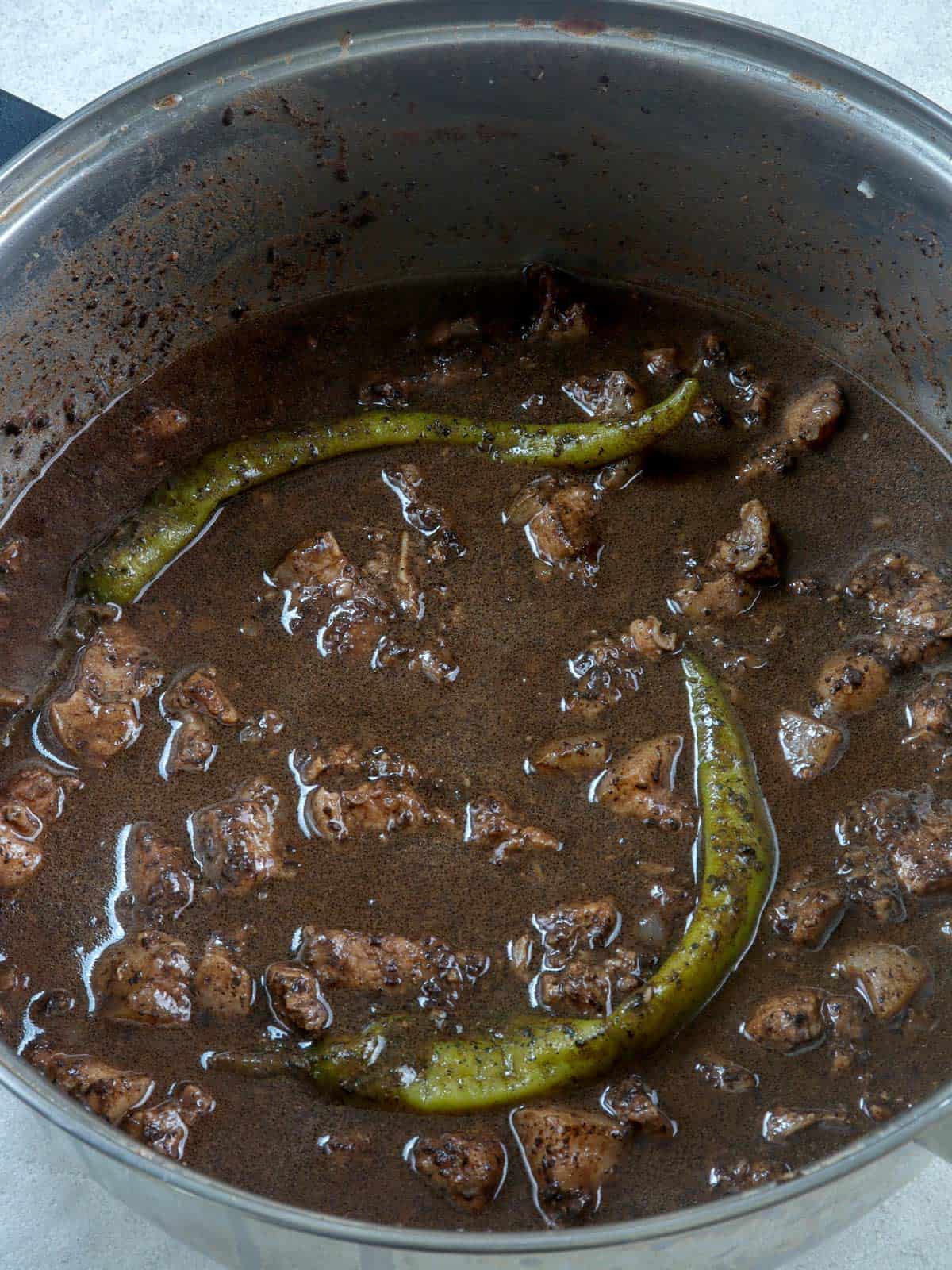
Ingredient notes
- Along with choice pork cuts, it also traditionally includes a variety of offal such as ears, intestines, heart, lungs, and kidneys. While pork is the most popular, other versions also use chicken or beef.
- I use vinegar in this recipe, but some versions use tamarind, kamias, or tomato sauce. Regardless of what you choose, these acids serve the same purpose. Along with adding the necessary touch of sourness to the dish, they also keep the blood from curdling.
- The brown sugar added during the last few minutes of cooking might seem out of place in this rich, savory dish but it helps balance the flavors.
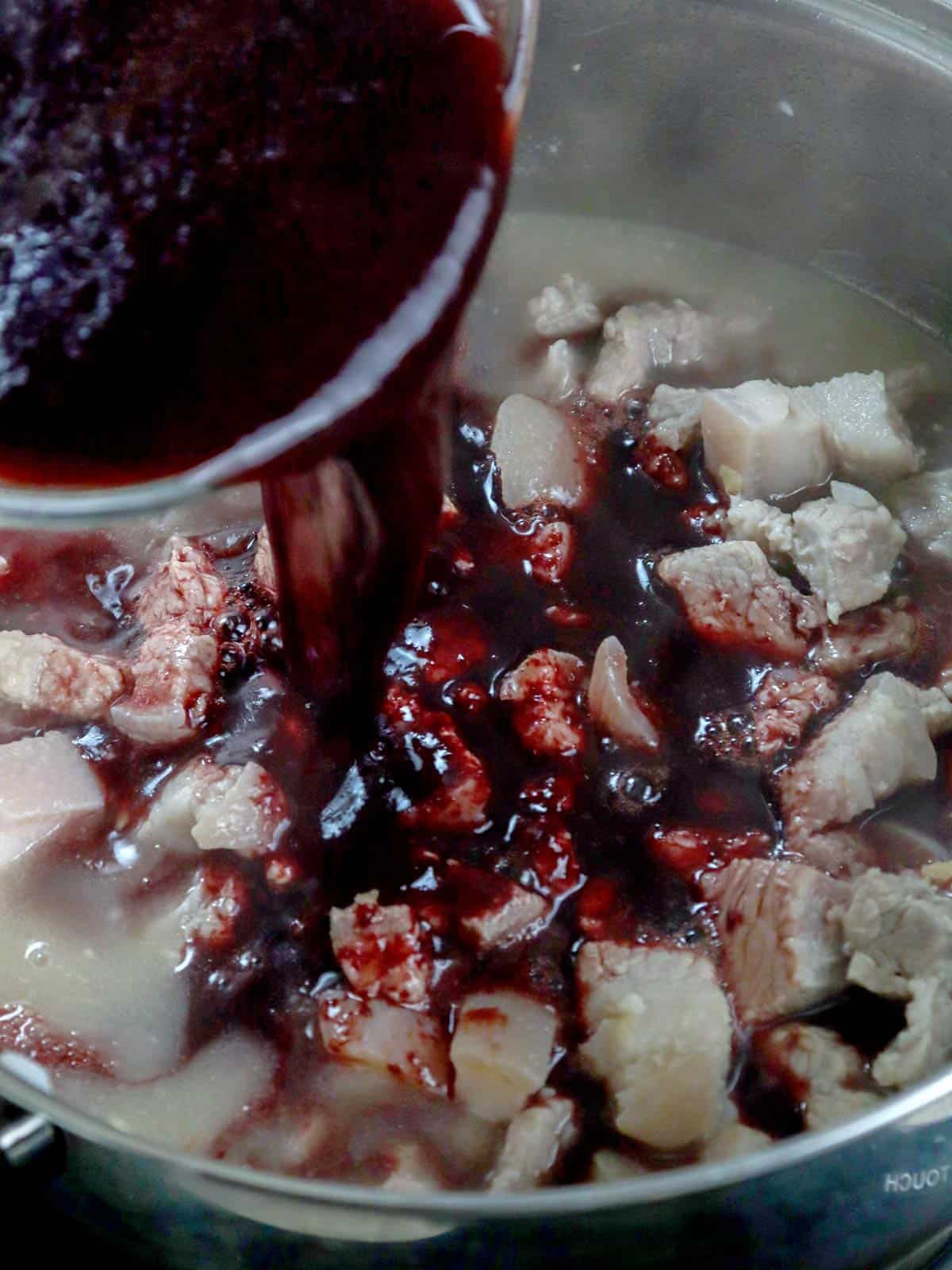
Cooking tips
- Stir about one or two tablespoons of the vinegar in the pork's blood before adding to the stew to ensure a smooth, deep brown sauce.
- Allow the vinegar to boil uncovered and without stirring for a few minutes to cook off the strong acid taste.
- No need to thicken the gravy! The protein albumin in the blood coagulates with heat application and acts as a natural thickener.
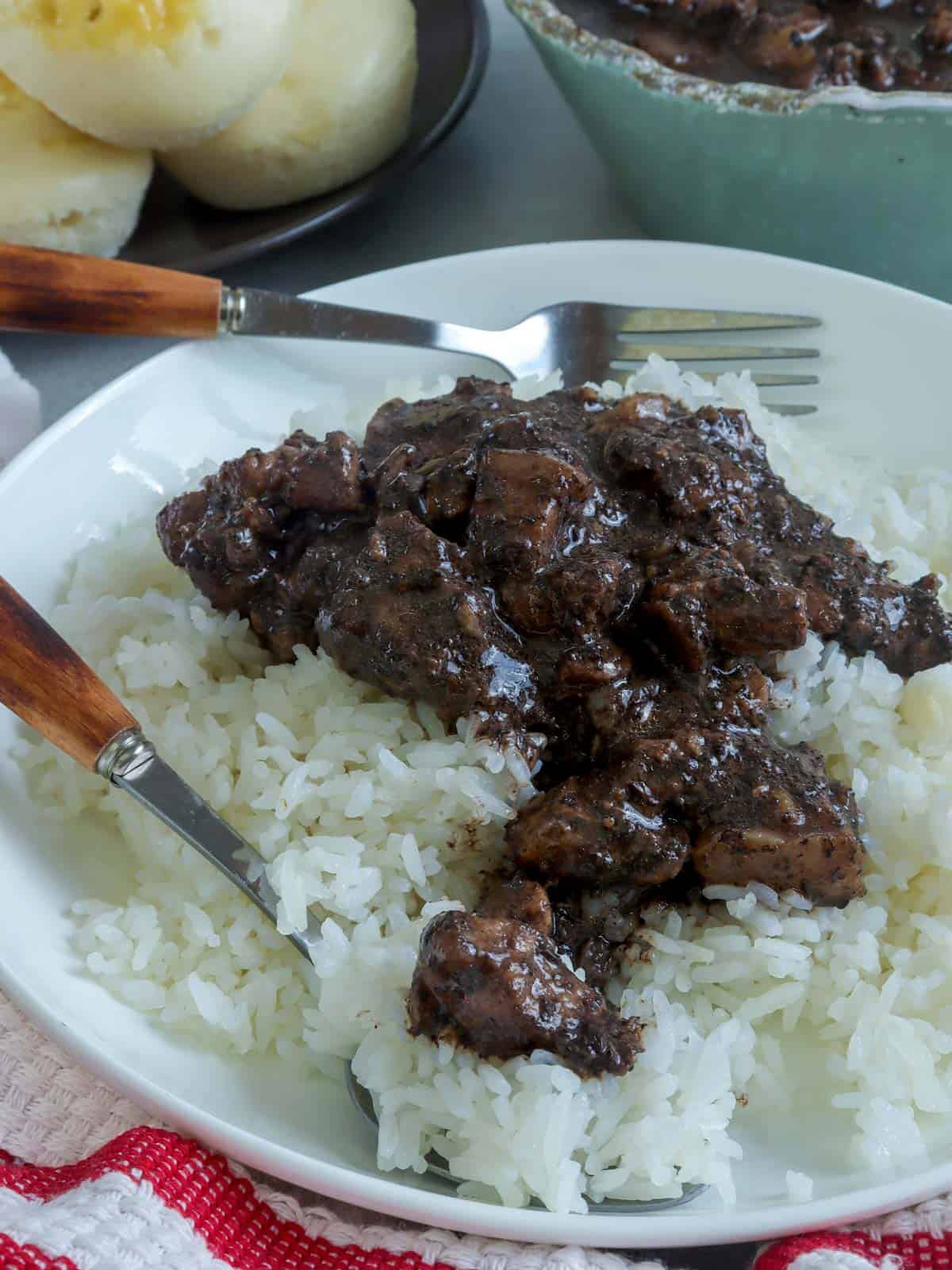
Storing leftovers
- Allow leftovers to cool and transfer to an airtight container. Refrigerate for up to 3 days or freeze for up to 2 months.
- Reheat in a saucepan over medium-low heat or in the microwave at 2 to 3-minute intervals to an internal temperature of 165 F.
Enjoyed this recipe? Try Batchoy Tagalog, made of coagulated blood, miswa noodles, and chili leaves. So hearty and delicious!
More pork recipes
Ingredients
- 10 ounces pork blood
- 1 cup vinegar
- 1 tablespoon canola oil
- 1 onion, peeled and chopped
- 4 cloves garlic, peeled and minced
- 1 thumb-size ginger (about 1 tablespoon), peeled and minced
- 2 pounds pork belly, cut into ½-inch strips
- 1 tablespoon fish sauce
- 1 cup water
- 1 tablespoon brown sugar
- 2 finger chilies (siling haba)
- salt and pepper to taste
Instructions
- In a bowl, combine pig's blood and about 2 tablespoons of the vinegar. Stir well.
- In a pot over medium heat, heat oil. Add onions, garlic, and ginger and cook until softened.
- Add pork and cook, stirring occasionally, until lightly browned.
- Add fish sauce and cook for about 1 to 2 minutes.
- Add vinegar and bring to a boil. Cook, uncovered and without stirring, for about 3 to 5 minutes or until slightly reduced.
- Add water and bring to a boil. Lower heat, cover, and continue to cook for about 15 to 20 minutes or until meat is tender.
- Add pork blood, stirring to disperse and prevent lumps.
- Add brown sugar and stir to dissolve.
- Add chili peppers.
- Continue to simmer for about 10 minutes or until sauce is thickened.
- Season with salt and pepper to taste. Serve hot with rice or puto.
Notes
- Stir about one or two tablespoons of the vinegar in the pork's blood before adding to the stew to ensure a smooth, deep brown sauce.
- Allow the vinegar to boil uncovered and without stirring for a few minutes to cook off the strong acid taste.
- No need to thicken the gravy! The protein albumin in the blood coagulates with heat application and acts as a natural thickener.
Nutrition Information
“This website provides approximate nutrition information for convenience and as a courtesy only. Nutrition data is gathered primarily from the USDA Food Composition Database, whenever available, or otherwise other online calculators.”

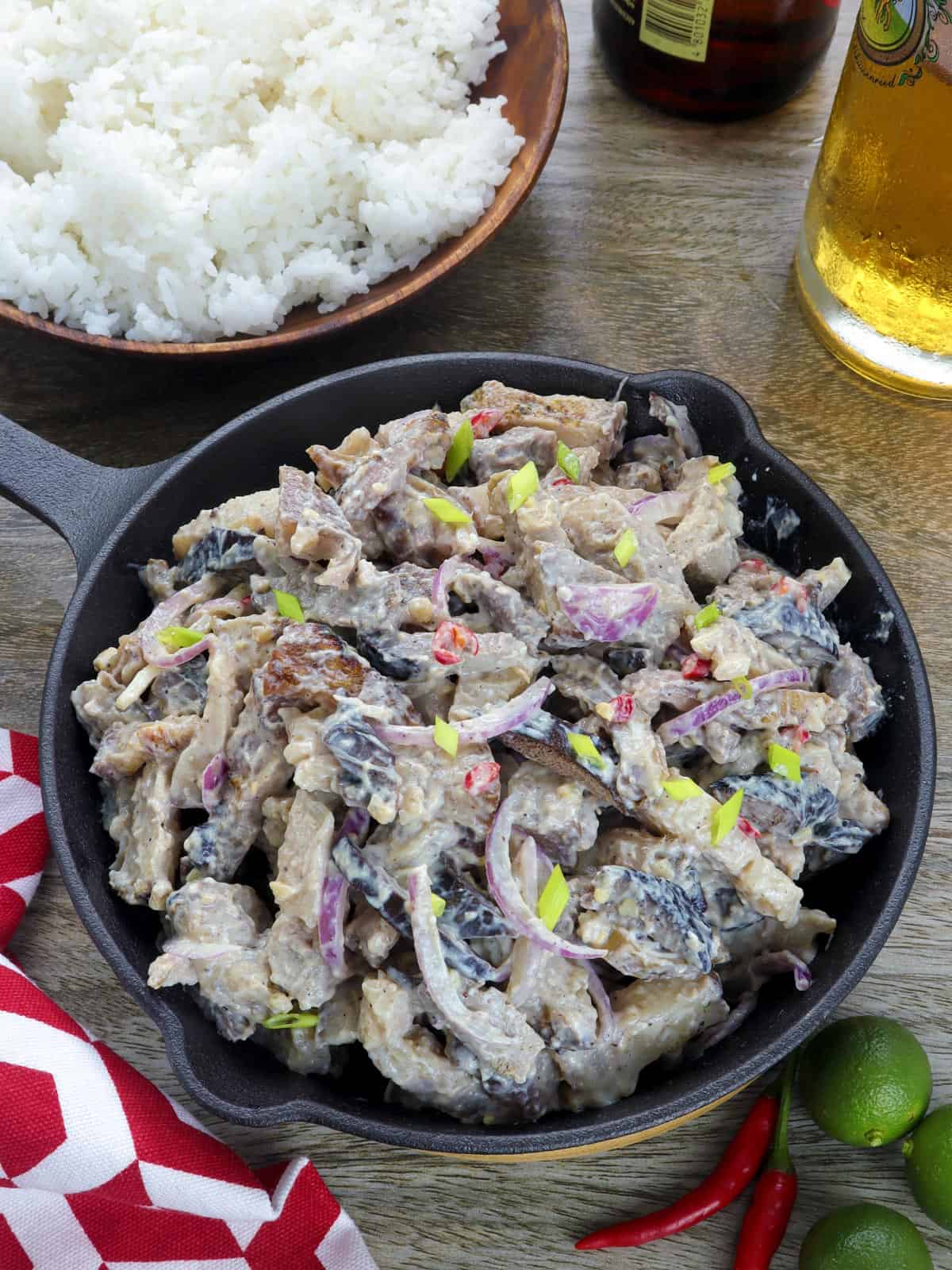
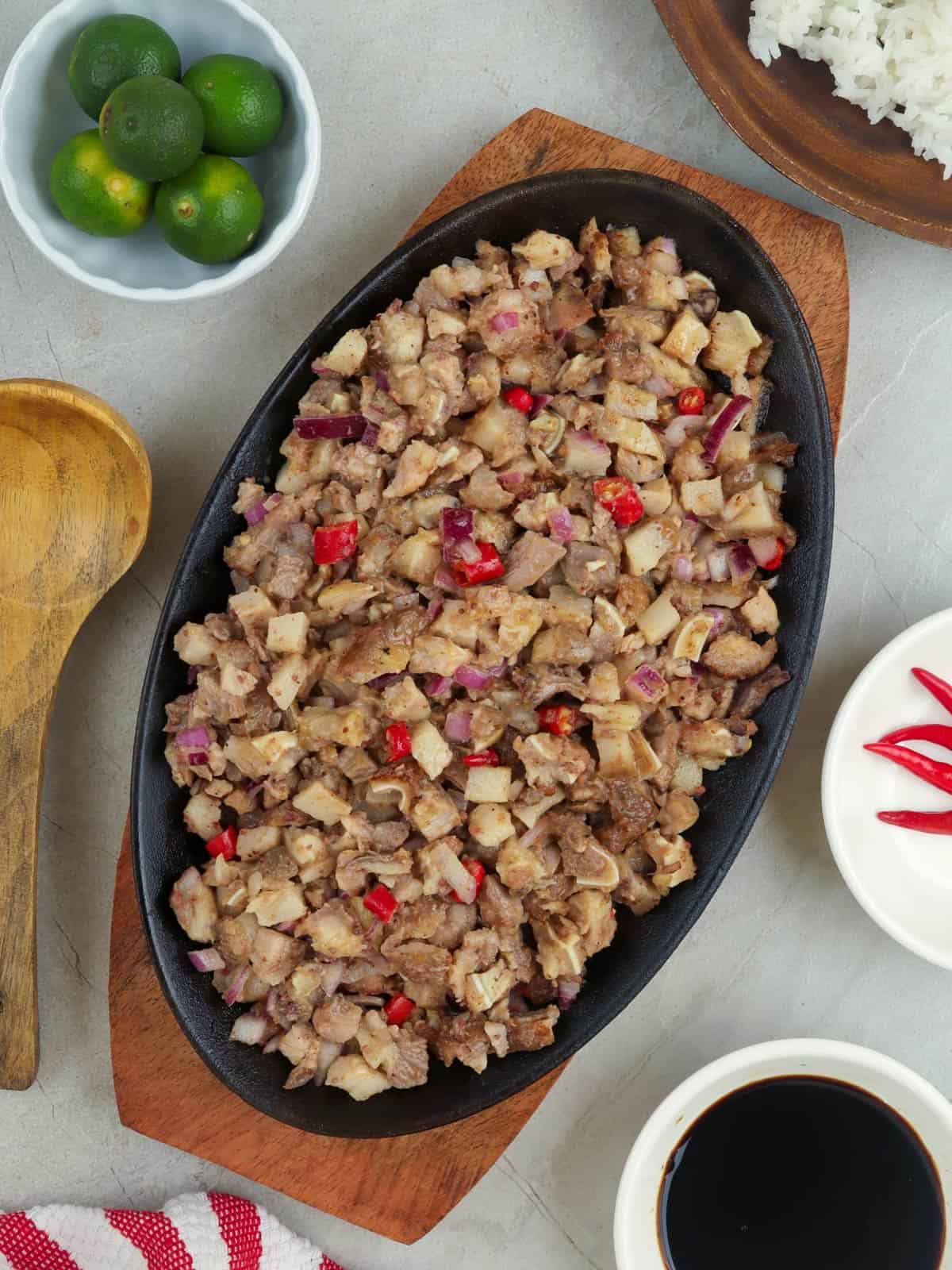
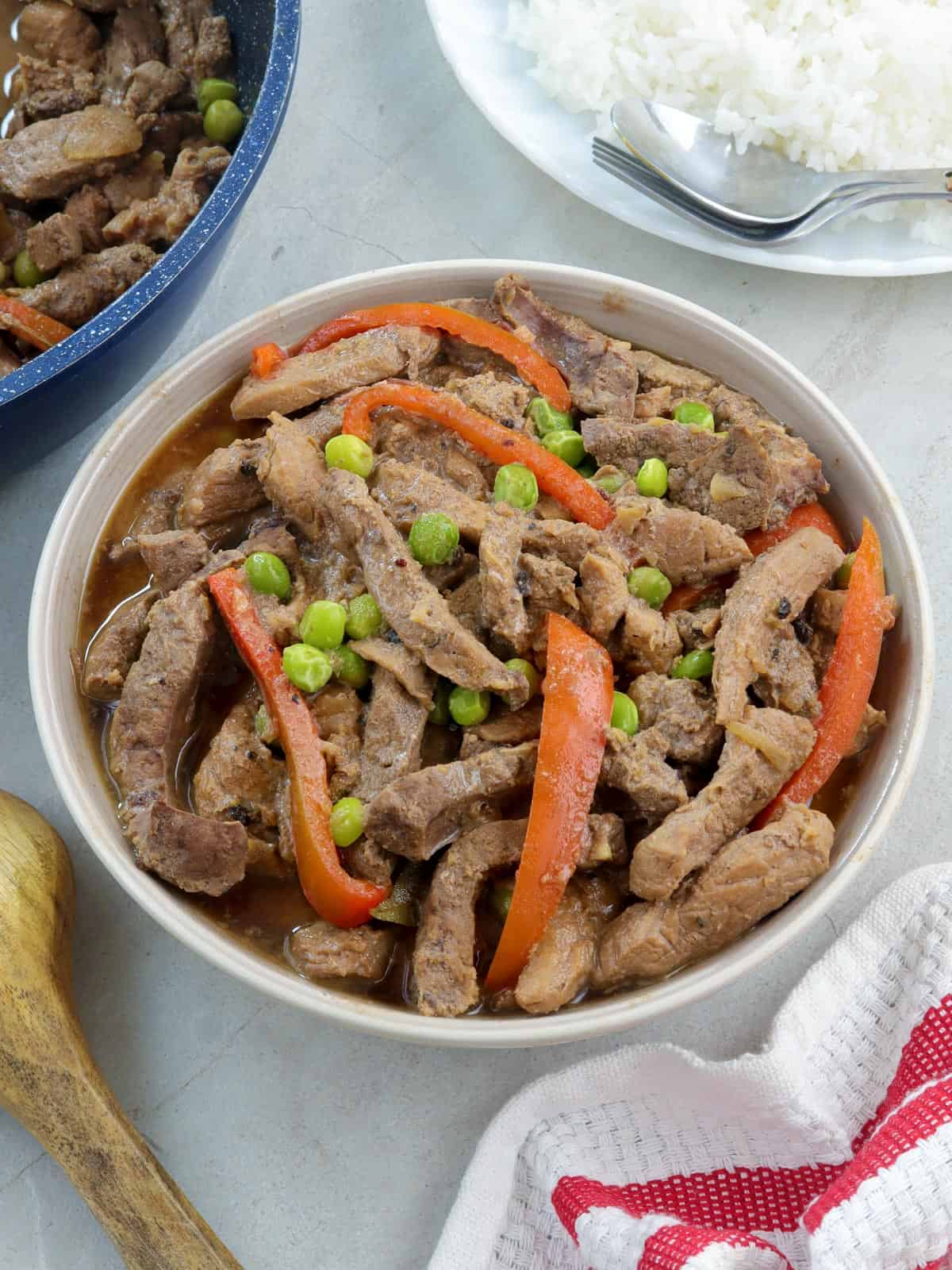
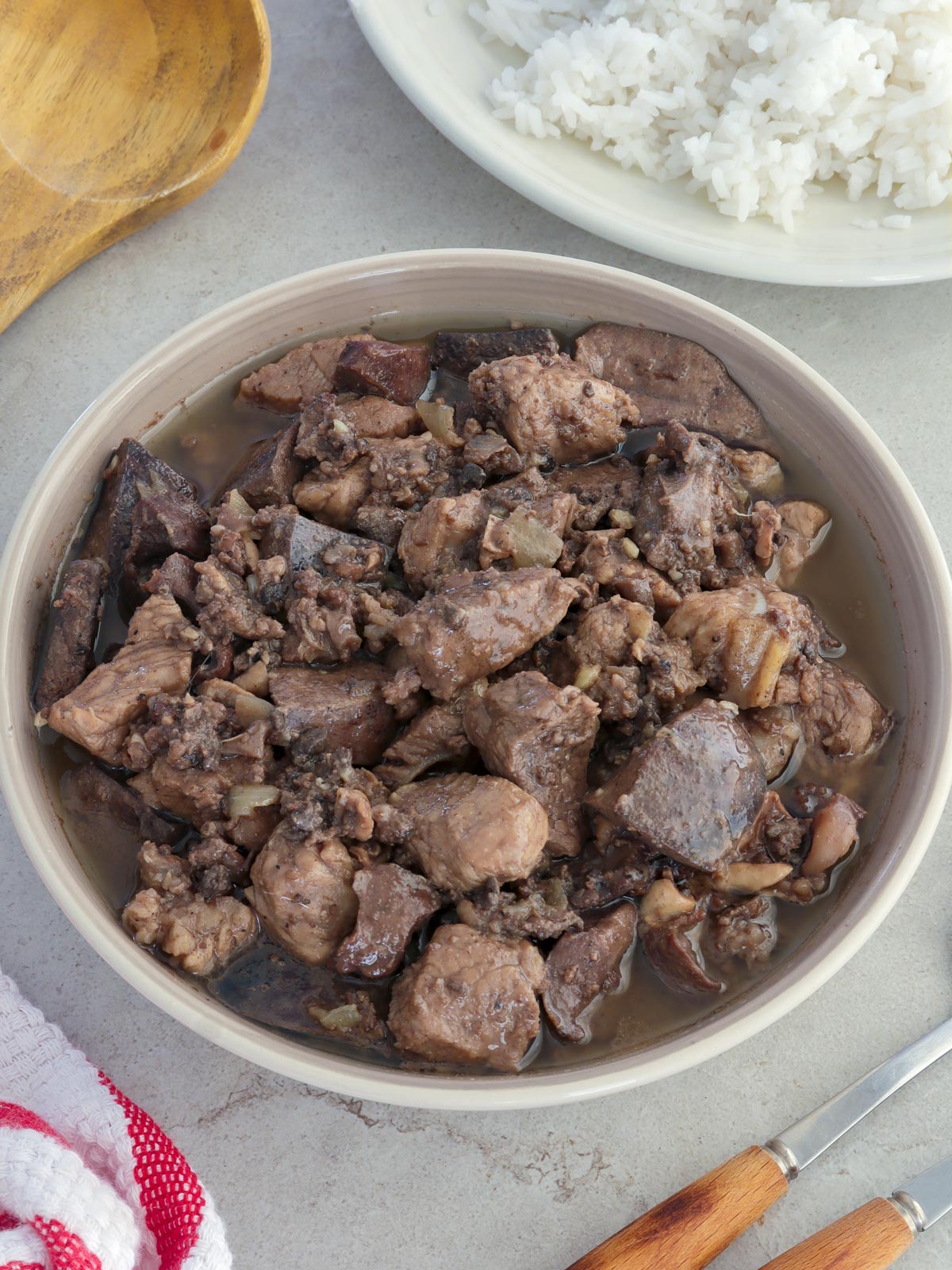
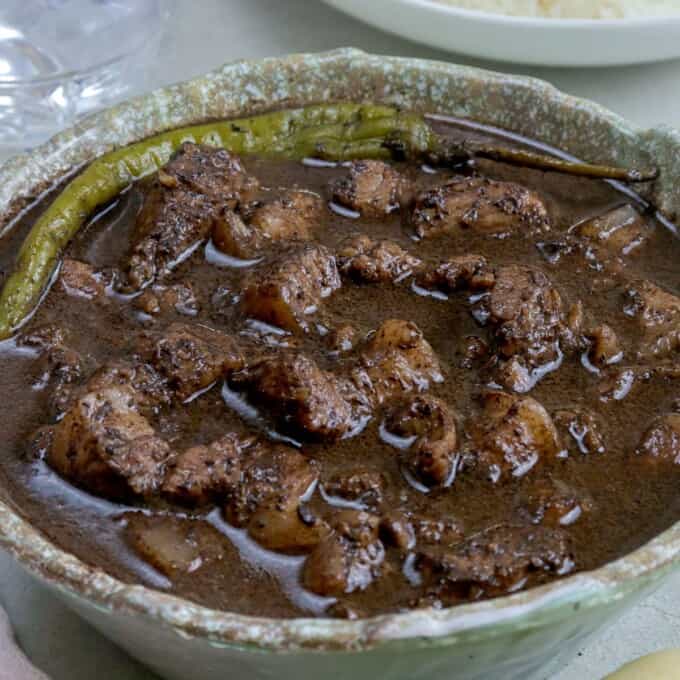
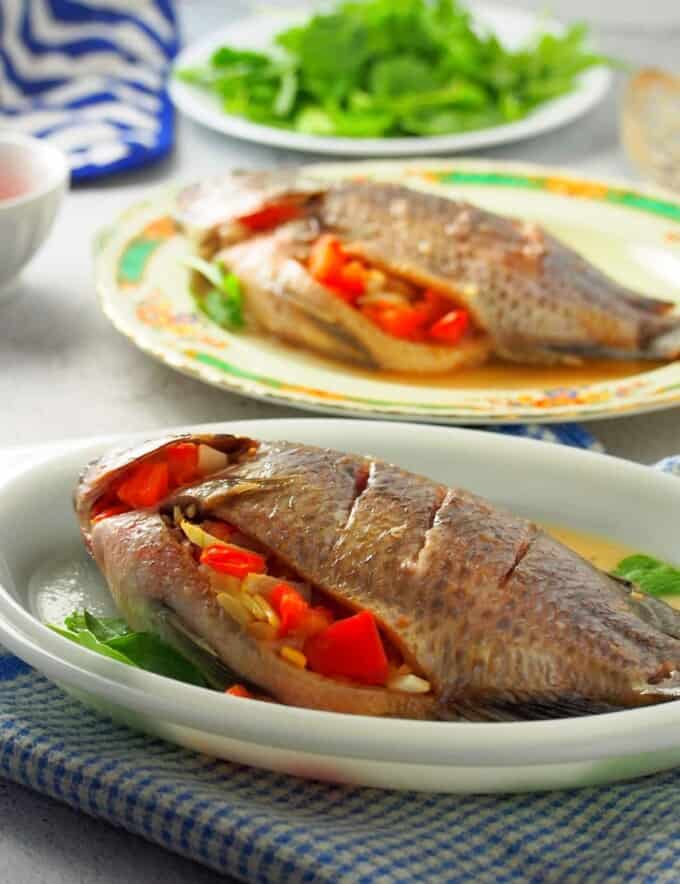

Gicel says
Best dinuguan recipe for me! I’ve cooked this a number of times following the recipe and it always comes out good! Thank you KP!
Apple Lipit says
Lahat ng recipe mo masarap and bang daming tips. Thank you for sharing methods of cooking, ang laki ng improvements sa pagluto ko. God bless you more.
Lalaine Manalo says
Salamat po sa feedback. I am glad nakakatulong ang mga recipes 🙂
Steve says
Awesome recipe. Loved it and will make it again. I’m not Filipino, but starting to make many of your recipes. I love the challenge of locating various ingredients.
Genevieve says
Thank you for making this recipe easy to understand & execute.
No need for complicated big words recipe instructions.
As long as finished product tastes as it should be, please continue to post simple and easy to do recipes. Appreciate.
God bless you.
Maria says
First time cooking dinuguan and this recipe is perfect. Thank you 😊
Ai says
Hello Lalaine, hoping to try your recipe this week but unsure about adding a full cup of vinegar. Would you say it’s a sour version?
Luz says
I bought 500g frozen pork blood to use in this recipe, can I refreeze the leftover blood after thawing or Is there any cooking suggestions? I don't prefer to let it go back to the freezer
Joao says
Hello I am Portuguese my wife is Filipina and my in laws have always made this dish for me and I love it. I tried making it following this recipe and it came out excellent! The only diference is a quickly pressure cooked the pork for 10 min before adding the blood cubes…Thank you
Virgie says
Thank you for your easy to follow recipes as well as universal available ingredients. Appreciate.
Fish sauce is too strong a smell when added to cooking. Is there any replacements that is milder yet taste the same? Thank you Lalaine. God bless you and your cooking talent.
Lalaine Manalo says
Hello, Virgie,
You can omit it and use salt 🙂
ERIC says
love it, but can you use ml since most of us Filipinos dont use ounce
David Bernardo says
Maraming salamat po sa recipe. I will make this this weekend for my baon for the week. This will be my first time making it so Im excited to try hehe.
M says
I so love this recipe that I’m cooking it again for the 2nd time! And many more times to come!!😋 ❤️